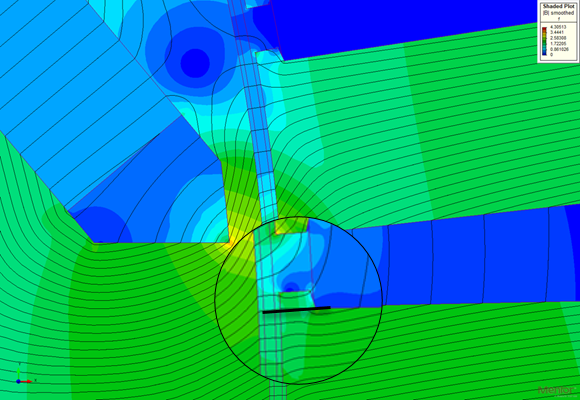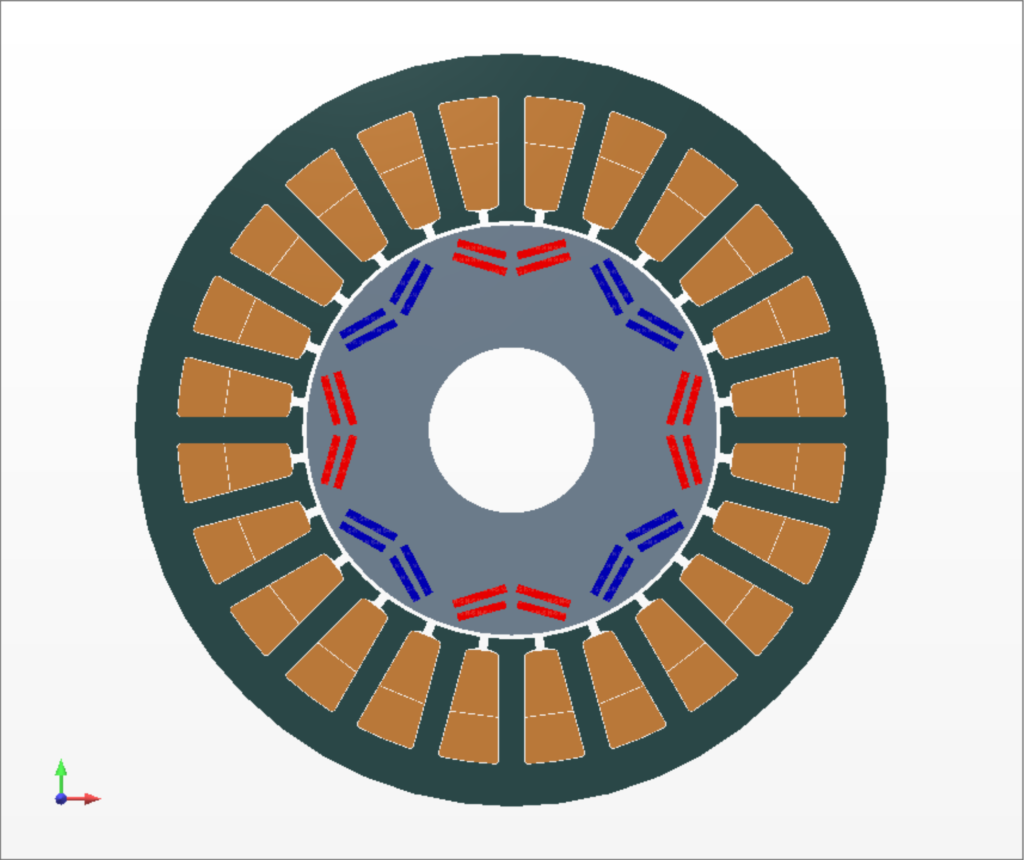What’s New in Simcenter MAGNET & Motorsolve 2019.1

There are some significant new capabilities in the latest version of both Simcenter MAGNET and Simcenter Motorsolve 2019.1. This includes a new electromagnetic and vibro-acoustics link among many others.
Predicting electromagnetic induced vibro-acoustics
In a faulty machine, the mechanical vibrations due to electromagnetic forces can be quite catastrophic. This can lead to damage, frequent servicing or total failure. The noise produced during operation can range from a minor irritation to a potential safety concern if too loud. As a result, it is important to perform linked electromagnetics and vibro-acoustics analysis early and at multiple stages of the design process.
To address this need, with both Simcenter MAGNET and Simcenter Motorsolve 2019.1, there are new options to account for the electromagnetically-induced acoustic noise and vibration.
The exported nodal force and force density fields from either software tool can be used as the load for structural and vibro-acoustic simulations, such as with Simcenter 3D.
Simcenter Motorsolve uses smart 2.5D technology to generate a 3D nodal force mesh model based on 2D simulations, significantly accelerating analysis with accurate results.

With Simcenter MAGNET, the 3D simulations allow for a detailed analysis of problems like power transformers and final design verification of electric machines.
New generalized electromagnetic force calculation
In Simcenter MAGNET 2019.1, a generalized electromagnetic force calculation method makes it possible to compute nodal force and force density on the surfaces of all types of components (i.e. ferromagnetic materials, permanent magnets and current carrying conductors). And this includes the case when the surfaces of components are touching.
It is also possible to compute the net forces on individual components whether they are touching other components or not. And in order to probe further, a virtual cut can be introduced creating a section of a component for which the net forces can be examined, such as a stator tooth tip.

Importing Simcenter SPEED motors
Simcenter SPEED PC-BDC models can be seamlessly imported into Simcenter Motorsolve software for higher-resolution finite element simulations. In other words, perform further exploration of motor performance and design alternatives using nonlinear transient with motion analysis that allows local identification of saturated regions.

Improvements in electromagnetic material property modeling
Accelerating product development with simulations requires material models which can above all else solve real physics. Therefore, improvements in accuracy, convergence and the speed of solutions in material property modeling are all part of this new release:
- Raleigh region support for surface impedance approximations. Now you can accurately compute losses in regions with small field strength
- Faster hysteresis modelling
- Improved demagnetization modeling
- Time-harmonic (AC) 2D solver is now taking the core loss into account in the finite element solution. Therefore, the effect of the core loss can be seen at the local field level
- Faster and more accurate identification of the Jiles parameters
New templates for Simcenter Motorsolve
In addition to all these improvements, there are new interior permanent magnet motor templates in Simcenter Motorsolve 2019.1 for variable orientation magnets and embedded variable orientation magnets.




Comments
Comments are closed.